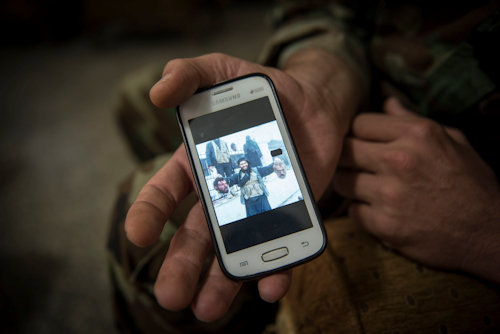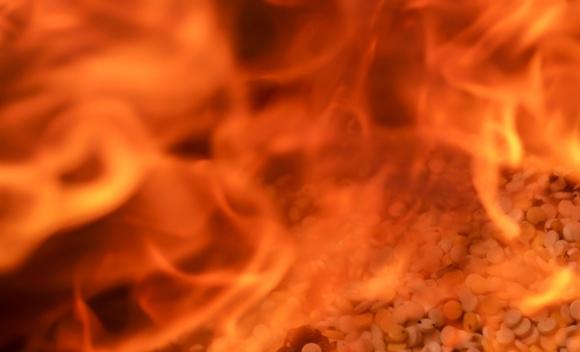L'Isis, o Daesh in a derogatory sense, it is a phenomenon that, to be understood from a Western point of view, must first be examined from the point of view of a Salafi, which is not easy. Isis is a utopia, even if supported by the abuse of the Captagon - an inhibitor of hunger, pain and inhibitions - by his fighters; it is the attempt to build up on earth a myth of Islamic orthodoxy that exploits the malaise of countries that still can not find neither national identity nor social cohesion.
If al Qaeda has aimed at elite aspects, Isis has given voice to all those who, for various reasons and while not in possession of valid doctrinal foundations, have tried to make sense of their existence; it is undeniable that the model jihadi offered by Isis, in applying as a tutelary deity of international terrorism, has influenced large geographical areas by proposing temporary alternative to Qaedism.
First of all, the term should be understood Jihad, given that even the UN has not yet managed to formulate a stringent definition of "terrorism"; at the academic level the objectives of a terrorist attack were and remain civilians and non-combatants, but the term Quranic Jihad identifies the fulfillment of a specific intent aimed at achieving an end. Perform the Jihad, combined with the will of God, means fighting in the name of God and this struggle, leaving aside the other theological meanings, now can only be traced back to the jihad bis saif, To fight with the sword.
 The emphasis given to the non-violent meaning, which does not allow the killing of civilians in battle or even suicide, then clashes with the interpretations generated by the most extreme fringes, such as Salafism, which do not allow the existence of other currents of thought and which originated in the last part of the Cold War, in Afghanistan, when the scope of the term was not fully evaluated mujahidin, or whoever practices the Jihad, and not an indistinct fighter for the faith. Usual / solid / stolid Western myopia.
The emphasis given to the non-violent meaning, which does not allow the killing of civilians in battle or even suicide, then clashes with the interpretations generated by the most extreme fringes, such as Salafism, which do not allow the existence of other currents of thought and which originated in the last part of the Cold War, in Afghanistan, when the scope of the term was not fully evaluated mujahidin, or whoever practices the Jihad, and not an indistinct fighter for the faith. Usual / solid / stolid Western myopia.
The Qaedist sentiment rises from the opposition to the Soviet invaders, but it strikes unpredictably (for Westerners) also other objectives within the same Umma, as in the 1979 demonstrated the assault on the Mecca Mosque aimed at overthrowing the Saudi kingdom, now no longer Islamically pure. Bin Laden finds fertile ground, and immediately proposes his idea, never so close to the Muslim Brotherhood of Sayyd Qutb, already implacable opponent of Nasser and therefore executed in Egypt; Afghanistan has raised the idea of the Muslim warrior who, after fighting against the Soviets, and after being finally classified in Al Qaeda, can only offer to fight against the invading Iraq of Kuwait, an offer rejected by the Saudi King Fahd who, for having accepted American aid instead, will find himself branded as an apostate.
From the 1996 the strategy changes: al Qaeda points to the foreigner who has profaned the Umma, the USA, and favors support for local fundamentalist groups; not enough American reaction in Afghanistan, Qaeda continues to hit, as when in the 2000 brings the suicide attack to the USS Cole, or on the Madrid trains in the 2004. Between the 2004 and the 2014 takes substance Daesh: thanks to the work of the Jordanian al Zarqawi, oriented in Iraq more to fight the Shiites than the Americans, and by virtue of the detachment from Jabhat al Nusrafilial of Al Qaeda in Syria, al Baghdadi, a former American inmate of camp Bucca (sic), he proclaims Caliph and gives his group a name, Islamic State, useful in its generality to avoid limitations to an expansion that intends to destroy the boundary principle and to exalt the radicalization of the struggle.
If al Qaeda has continued to operate according to the concept of network between Arabia, Maghreb, Somalia, Syria, Isis has aimed at creating a state capable of controlling the territory, demanding taxes, exploiting the black oil market, drawing sustenance from renewed activities criminals in the Siraq.
Daesh, as long as he could, used the means of communication accurately, improving and diversifying the Qaedist technique, and encouraging the dawa, proselytism. But he committed unpardonable mistakes, already accomplished by other Islamist realities: he multiplied his opponents without seeking alliances, he committed himself to suicidal and unsustainable tactics, he accentuated his Sunni connotation by removing any other religious component, he carried out indiscriminate violence that canceled consent.
But has the West really won its war against the Caliphate? How could the jihadism after the defeat of Daesh?
Isis is going withdrawing to the desert (inhiyaz ila al-sahra), probably towards the Sunnite provinces of Anbar, but its fighters, potential foreign fighters protected by European logistics networks, have vanished, and the risk of a guerrilla recovery is high: to defeat a terrorist organization in the field does not mean having eliminated the possibility of his rebirth or, better, of his metamorphosis. The logic imposes to consider as possible a war of friction that could be based on the inability of the remaining geopolitical actors to administer the post-conflict, both to manage an enormous mass of fleeing refugees, and to oppose an idea that has fascinated and imported thousands of people voted for the construction of a new Islamic society made not only of soldiers, but also of doctors, teachers, engineers.
Lost the domain of the social on the internet, the media strategy has changed; Isis may not want more fighters in Siraq, but sleep cells in Europe ready to operate and radicalise anonymous and unpredictable individuals, perhaps aiming to reposition themselves in Libya, a land rich in those factors of instability and power vacuumes so precious to Daesh.
 What has not been considered is that Isis is not the only organization with military capabilities, that there is a diarchy jihadi; in a sort of historical compensation, after a period of obscuration, al Qaeda has returned to strengthen and extend its influence in Yemen, Somalia, Libya and Kashmir. The fact that mediatically al Qaeda offers fewer points of spectacle, has not prevented it from returning to being the main global actor of terror, thanks to the role assumed by Hamza Bin Laden, the son of Osama, who swearing loyalty to the Taliban leadership, is he managed both to cut out to the Zawahiri, already of his little empathetic and following, both to win the respect of numerous Salafis of Isis, which he never verbally attacked. Hamza, a unifying figure for both Isis and al Qaeda, who is gaining new life for him and has started working with local populations trying to transform himself from an elite organization to a more moderate mass movement than Isis.
What has not been considered is that Isis is not the only organization with military capabilities, that there is a diarchy jihadi; in a sort of historical compensation, after a period of obscuration, al Qaeda has returned to strengthen and extend its influence in Yemen, Somalia, Libya and Kashmir. The fact that mediatically al Qaeda offers fewer points of spectacle, has not prevented it from returning to being the main global actor of terror, thanks to the role assumed by Hamza Bin Laden, the son of Osama, who swearing loyalty to the Taliban leadership, is he managed both to cut out to the Zawahiri, already of his little empathetic and following, both to win the respect of numerous Salafis of Isis, which he never verbally attacked. Hamza, a unifying figure for both Isis and al Qaeda, who is gaining new life for him and has started working with local populations trying to transform himself from an elite organization to a more moderate mass movement than Isis.
In the Middle East, and not only in the Siraq, it is therefore possible to hypothesize that a stronger and more volatile entity is being reorganized, defeated militarily, but linked to a bond, that of power, closely connected to the concept of Caliphate, an Idra able to present itself everywhere, and perhaps under a stronger and unitary leadership. Just think it can to be over it could really be just a dangerous illusion.
(photo: US Army / Giorgio Bianchi)












